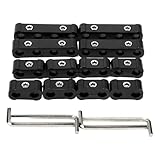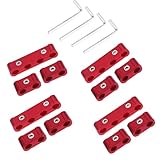Spark Plug Wire Keep Popping Out
Ever had that frustrating moment where your car’s spark plug wire keep popping out? It’s more than just an annoyance; it can significantly impact your engine’s performance and even lead to a complete breakdown. This detailed guide will help you understand why this happens, how to diagnose the problem, and the best ways to
prevent it from recurring.
Understanding Spark Plug Wires and Their Function
What are Spark Plug Wires?
Spark plug wires, also known as ignition cables or high-tension leads, are crucial components of your vehicle’s ignition system. Their primary function is to deliver the high-voltage electrical current from the ignition coil to the spark plugs. Think of them as the high-speed data cables of your engine’s firing system. Each wire is specifically designed to withstand incredibly high voltages – often tens of thousands of volts – without shorting out or causing damage. Without properly functioning spark plug wires, your engine won’t be able to ignite the air-fuel mixture in the cylinders, leading to misfires and a whole host of problems. The material composition of the wires, typically silicone or rubber, insulates the high-voltage current from the surrounding components and elements. A damaged wire, even a small crack, can cause a significant drop in voltage leading to poor ignition and a sputtering engine.
Why are Spark Plug Wires Important for Engine Performance?
Efficient combustion is the heartbeat of any internal combustion engine (ICE). The spark plug wires play a pivotal role in ensuring that each cylinder receives a strong, consistent spark at the precise moment. A weak spark, caused by damaged or loose spark plug wires, can lead to incomplete combustion, resulting in reduced engine power, poor fuel economy, and increased emissions. Imagine trying to light a campfire with a damp matchstick – you need a strong, consistent spark for efficient combustion. Similarly, your engine needs a strong electrical spark to effectively ignite the fuel-air mixture. Furthermore, consistent, reliable ignition is crucial for a smooth running engine. Misfires, caused by faulty wires, can lead to rough idling, hesitation during acceleration, and even engine stalling. Maintaining your spark plug wires is a cost-effective way to ensure your engine’s longevity and peak performance.
Common Issues that Cause Spark Plug Wires to Pop Out
Several factors contribute to spark plug wires popping out of their connection points. These include worn-out boots, loose terminals, corroded connections, and even incorrect installation. Over time, the rubber or silicone boots that encapsulate the wire terminals can degrade, becoming brittle and losing their grip. This is especially true in harsh environmental conditions with exposure to extreme temperatures, moisture, and UV radiation. Additionally, vibrations from the engine can loosen the terminals over time, leading to intermittent or complete disconnection. Corrosion, caused by moisture and salt buildup, can also degrade the metal connection points, reducing the electrical conductivity and making the connection less secure. Improper installation, such as not fully seating the wires onto the terminals, is another frequent culprit. Regular visual inspections of your spark plug wires and connections are crucial for preventing this issue.
Diagnosing the Problem: When Spark Plug Wires Keep Popping Out
Visual Inspection of Spark Plug Wires and Boots
The first step in diagnosing why your spark plug wires keep popping out is a thorough visual inspection. Carefully examine each wire, paying close attention to the boots. Look for any signs of cracks, cuts, or significant wear and tear on the rubber or silicone insulation. Brittle boots are a clear indication that they need replacement. Also, inspect the metal terminals at both ends of the wires – the end that connects to the spark plug and the end that connects to the distributor or coil. Look for corrosion, which may appear as a green or white powdery substance. Corrosion reduces electrical conductivity and weakens the connection. A simple visual check can often pinpoint the exact cause of the problem, saving you time and money on unnecessary repairs.
Checking for Loose or Corroded Connections
Once you’ve visually inspected the wires, it’s essential to check the connections themselves. Gently but firmly tug on each wire to see if it feels loose. If it comes out easily, this indicates a weak connection. To address corrosion, you can use a wire brush or sandpaper to carefully clean the metal terminals. Make sure to clean both the terminal on the wire and the terminal on the spark plug or distributor cap. After cleaning, apply a dielectric grease to the terminals – this prevents future corrosion. Ensure you apply a moderate amount of grease; excess grease can actually hinder the connection. This simple procedure improves the electrical conductivity and ensures a secure fit.
Testing the Ignition System for Other Issues
If you’ve checked for visible damage and loose connections, and the spark plug wires continue to pop out, the problem might lie elsewhere in the ignition system. There might be issues with the ignition coil, the distributor cap (if your vehicle has one), or even the spark plugs themselves. Testing the ignition system often requires specialized tools and expertise. A mechanic can use diagnostic equipment to pinpoint the exact cause of the problem. A multimeter might help in determining if the ignition coil is producing the correct voltage, and a spark tester can confirm if each spark plug is receiving a strong spark.
Solutions and Preventive Measures: Keeping Spark Plug Wires Secure
Replacing Worn-Out Spark Plug Wires
If you find any cracks, significant wear, or brittle areas on the spark plug wires or boots, replacement is the only solution. It’s important to use high-quality replacement wires that are specifically designed for your vehicle’s make and model. Using incorrect wires can lead to poor performance and potential damage to the ignition system. When installing the new wires, make sure to carefully seat each wire onto the terminal, ensuring a snug fit. Don’t force it; if it doesn’t fit easily, there’s probably something wrong.
Tightening Loose Connections and Addressing Corrosion
If the wires are loose but not visibly damaged, tightening the connections might be all that’s needed. Simply tightening the terminal screws, clamps, or connectors will improve the connection. Always ensure that they’re properly secured. Corrosion is a silent enemy, slowly degrading the connection over time. Remember to clean the terminals thoroughly and apply dielectric grease to prevent future corrosion. Regularly inspecting and cleaning the connections can go a long way in preventing wires from popping out.
Using Dielectric Grease for Enhanced Connection
Dielectric grease is a specialized lubricant specifically formulated for electrical connections. Applying it to the terminals before connecting the spark plug wires helps create a stronger, more reliable connection. The grease prevents corrosion by repelling moisture and contaminants, thus ensuring a consistently smooth and secure connection. Remember to use only the correct type of dielectric grease – don’t substitute it with regular grease or oil.
Choosing the Right Spark Plug Wires
Understanding Material Differences (Silicone vs. Rubber)
Spark plug wires come in various materials, most commonly silicone and rubber. Silicone wires are generally more durable and resistant to heat and extreme temperatures than rubber wires. They tend to last longer. Rubber wires, on the other hand, are more susceptible to cracking and degradation over time, particularly in harsh environments. The choice depends on your vehicle’s operating conditions and your budget. For high-performance applications or in harsh climates, silicone wires are preferable.
Factors to Consider When Selecting Spark Plug Wires
Several factors influence the selection of appropriate spark plug wires. One of the most important is the correct length – the wires need to reach the spark plugs without being excessively long or short. Incorrect length can lead to interference and potential damage. The wire’s resistance is also a crucial factor, affecting the quality and strength of the spark. Lower resistance generally translates to a stronger spark, leading to better engine performance. Furthermore, ensure the wires match the specifications of your vehicle’s ignition system. Incorrect wire specifications can cause serious issues.
Comparing Different Brands and Their Features
Several reputable brands manufacture spark plug wires, each with varying features. Some brands might offer high-temperature resistance, longer lifespans, and lower resistance than others. You can compare different brands based on their specifications and reviews to make an informed decision. Reading customer reviews can provide valuable insights into the reliability and performance of different brands. Researching reviews is an excellent way to gauge real-world experiences and choose the optimal product.
Advanced Troubleshooting Techniques
Using a Multimeter to Test Wire Continuity
A multimeter is a valuable tool for advanced troubleshooting. It can help verify the electrical continuity of each spark plug wire. If a wire is broken internally, the multimeter will show an open circuit, indicating a fault. This is an accurate way to check for internal wire breakage, a fault not always evident during visual inspection. This non-invasive technique can save time and pinpoint a problem that a visual check might miss.
Identifying Intermittent Problems
Intermittent problems can be challenging to diagnose. These issues, where the spark plug wires intermittently pop out, are often caused by loose connections, weak springs, or slightly cracked boots. To troubleshoot these issues, you might need to use a combination of techniques, including visual inspection, multimeter testing, and careful observation during operation. Sometimes a thorough cleaning, tightening connections, or even replacing a wire that seems marginal can be the solution.
Employing a Professional Mechanic
If you’ve exhausted all troubleshooting steps and the problem persists, it’s advisable to seek professional help. A qualified mechanic has the expertise and tools to diagnose and repair more complex issues related to the ignition system. A professional diagnosis ensures that all potential problems are addressed, preventing future issues and ensuring your car’s optimal performance. They can perform more in-depth tests and identify any problems you might have missed.
The Importance of Regular Maintenance
Routine Inspections for Preventing Issues
Regular inspection is your best friend when it comes to spark plug wires. Visual inspections should be part of your regular vehicle maintenance routine. By regularly checking for cracks, wear, loose connections, and corrosion, you can identify potential problems early, avoiding expensive repairs and downtime. Simple regular checks can be invaluable in identifying and fixing issues before they escalate.
Frequency of Spark Plug Wire Replacement
The lifespan of spark plug wires varies depending on their material, driving conditions, and environmental factors. While some manufacturers might suggest replacement at certain mileage intervals, it’s better to visually inspect them at regular intervals and replace them if needed. Rubber wires might need replacing more frequently than silicone ones. When you notice any signs of wear or damage, such as cracks, brittle boots, or significant corrosion, replacing the wires is a must. This is a relatively inexpensive preventive maintenance step that can save substantial cost in the long run.
Impact of Neglecting Spark Plug Wire Maintenance
Neglecting spark plug wire maintenance can lead to several problems. These include misfires, reduced engine power, poor fuel economy, increased emissions, and, in some cases, engine damage. A misfire can damage the catalytic converter in the long term. Therefore, maintaining your spark plug wires is not just about convenience; it’s about ensuring the efficiency, longevity, and safety of your vehicle. This small investment can save hundreds of dollars and many hours of frustration.
Frequently Asked Questions
What is the best way to prevent spark plug wires from popping out?
The best way to prevent spark plug wires from popping out involves regular maintenance and proper installation. This includes visually inspecting the wires and boots for cracks or damage, cleaning and tightening corroded connections, and using dielectric grease to enhance the connection. Replacing worn-out wires is crucial, and always ensuring the wires are properly seated onto the terminals is paramount. Learn more about proper installation techniques.
How much does it cost to replace spark plug wires?
The cost to replace spark plug wires varies depending on several factors, including the vehicle’s make and model, the type of wires used (silicone versus rubber), and labor costs. Generally, the cost of the spark plug wires themselves ranges from $20 to $100, while labor costs can vary depending on the mechanic or shop. Some DIY enthusiasts can save money by doing this work themselves.
How often should I replace my spark plug wires?
The recommended replacement interval for spark plug wires depends on the material, usage, and environmental factors. Rubber wires tend to degrade faster than silicone wires. Visual inspection is key – if you see any cracks, brittleness, or corrosion, it’s time for replacement regardless of mileage. A good rule of thumb is to inspect them every 30,000-50,000 miles or every two years, whichever comes first.
Can I reuse spark plug wires?
While technically you can reuse spark plug wires, it’s generally not recommended. Once a spark plug wire has been removed, there’s a risk that the boot or terminal might be damaged. Reusing damaged wires can lead to poor connection, misfires, and potential ignition problems. It’s safer and more efficient to use new replacement wires.
What happens if a spark plug wire is loose?
A loose spark plug wire can lead to several problems, including misfires, reduced engine power, rough idling, and poor fuel economy. The loose connection reduces the amount of voltage delivered to the spark plug, resulting in a weaker spark. In severe cases, it can lead to engine stalling or damage to the catalytic converter.
Are silicone spark plug wires better than rubber ones?
Silicone spark plug wires are generally considered superior to rubber ones due to their higher heat resistance, durability, and longer lifespan. They’re less prone to cracking and degradation, making them a better choice for high-performance applications or harsh operating conditions. However, they also tend to cost more than rubber wires.
How can I tell if my spark plug wire is bad?
A bad spark plug wire will often exhibit visible signs of damage, such as cracks, cuts, or brittleness in the insulation. It may also have corroded terminals. Performance issues such as misfires, rough idling, loss of power, or poor fuel economy can indicate bad spark plug wires. A multimeter can also be used to test the continuity of the wire, detecting any internal breaks.
Final Thoughts
Dealing with spark plug wires that keep popping out is frustrating, but understanding the causes and implementing the preventative measures discussed above can help you avoid this problem in the future. Regular inspection, cleaning of connections, and the use of dielectric grease are all simple steps that can greatly extend the lifespan of your spark plug wires and ensure your engine runs smoothly. Remember, a small amount of preventative maintenance can save you significant time, money, and frustration down the road. If you’re uncertain about any aspect of this process, don’t hesitate to consult a qualified mechanic. Keep your engine running smoothly, and enjoy the ride!

David Peterson, the chief editor of sparepartscare. I am an automobile engineer and assign to an local firm with much experience in automobile equipment. During the time, most of my experience is related to the Industry of cars parts. I learned about the thing, when working with experienced inspectors, one must be as good as the inspector, or better, with knowledge of the project as well as the practical aspects of automobile industry.








